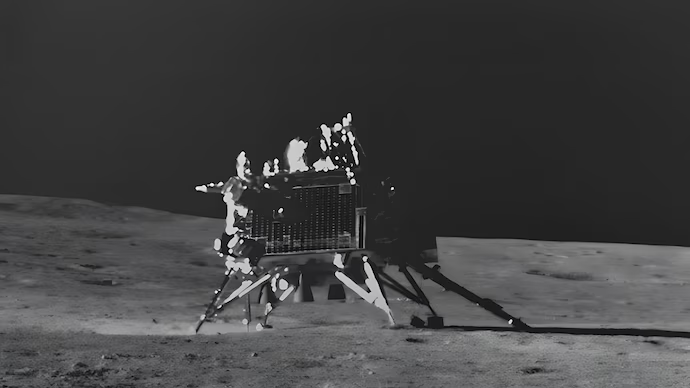
Chandrayaan-3’s Shiv Shakti Point: A Lunar Time Capsule as Old as Life on Earth
A Historic Mission Unveils Lunar Secrets
India’s Chandrayaan-3 mission made history on August 23, 2023, by landing near the Moon’s south pole at Shiv Shakti Point. This region, now revealed to be approximately 3.7 billion years old, dates back to a pivotal era when microbial life first emerged on . This discovery bridges the cosmic timelines of Earth and the Moon, offering profound insights into our shared history.
Decoding the Moon’s Geological Tapestry
Scientists from India’s Physical Research Laboratory (PRL) and ISRO created the first high-resolution geological map of Shiv Shakti Point, revealing three distinct terrains:

- High-relief rugged terrain: Characterized by hills and rough surfaces.
- Smooth plains: Flat areas with minimal surface features.
- Low-relief smooth plains: Vikram’s landing zone, with slight elevation .
The region is blanketed by debris from the Schomberger crater, with boulders exceeding 5 meters in size originating from a fresh 540-meter crater 14 km south of the site. Smaller rock fragments west of the site likely stem from a nearby 10-meter crater.
A Shared Timeline: Moon and Earth’s Early Years
The Moon’s 3.7-billion-year-old surface coincides with Earth’s Archean Eon, when primitive life forms like cyanobacteria began shaping our planet’s atmosphere. This parallel timeline highlights the interconnected evolution of celestial bodies in our solar system.
“The age of Shiv Shakti Point not only tells us about the Moon’s past but also provides a cosmic mirror to understand Earth’s early biological journey.” — ISRO Research Team
Scientific Implications and Future Missions
The Pragyan rover’s APXS instrument analyzed lunar soil, revealing uniform composition dominated by Ferroan Anorthosite (FAN), supporting the Lunar Magma Ocean theory. Surprisingly, higher magnesium-rich minerals suggest ancient impacts like the South Pole-Aitken basin mixed deeper lunar layers with surface material.
Building on this success, ISRO’s Chandrayaan-4 mission (2027) aims to return lunar samples, deepening our understanding of the Moon’s geological and chemical history.
Chandrayaan-4: The Next Frontier
Scheduled for 2027, this mission will employ a two-phase launch strategy to collect and return lunar regolith. The data could further unravel mysteries of the Moon’s formation and its role in Earth’s development.
Conclusion: Bridging Cosmic and Terrestrial Histories
Chandrayaan-3’s findings at Shiv Shakti Point transcend lunar exploration—they connect humanity to a time when life first stirred on Earth. As ISRO prepares for future missions, each discovery reaffirms the Moon’s role as a celestial archive, preserving clues to our solar system’s dynamic past.












